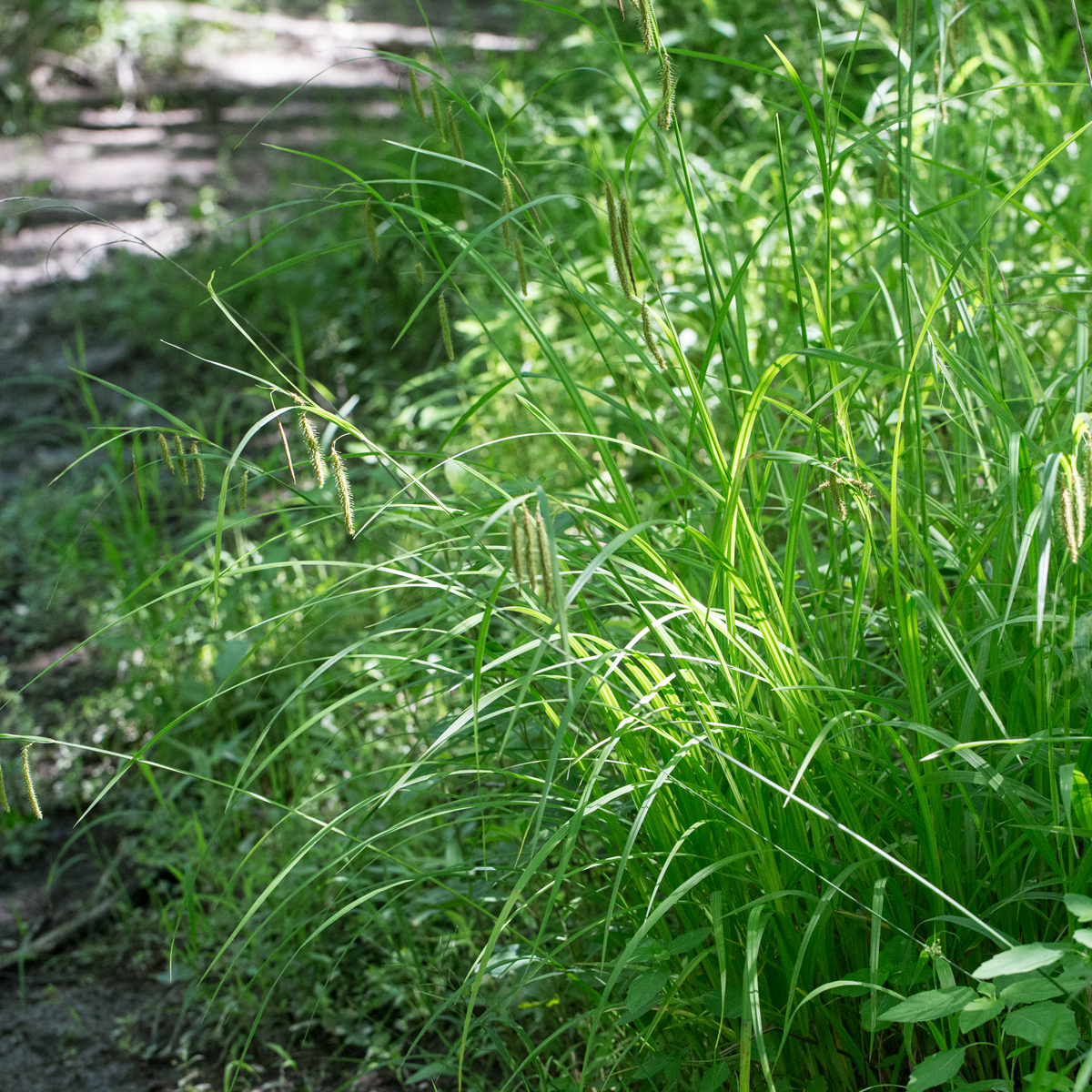Fringed sedge
Carex crinita
Carex crinita
Couldn't load pickup availability
Sun/shade: Full sun to full shade
Soil moisture: Medium to wet
Height: 3'
Flowering period:
Deer resistance: High
Fringed sedge’s long seedheads hang from its arching stems, looking pleasantly languid on a lazy summer afternoon. In natural situations, fringed sedge often grows next to streams. In comparison to other streamside sedges, fringed sedge likes an intermediate space, between sedges that grow at the water’s edge and sedges of more elevated, wooded zones. This means that fringed sedge is quite versatile, doing well in sunny, seasonally flooded areas as well as shadier spots of moderate moisture. In the garden, fringed sedge may require watering during summer dry spells.
The plant produces a tussock of arching, grasslike leaves, and it can spread via rhizomes to form a large colony. Fringed sedge offers a nice textural contrast when planted between clusters of wildflowers, and its drooping seedheads are an interesting element. Fringed sedge works well in formal or naturalized gardens, and is especially useful in rain gardens and wet areas.
In terms of wildlife value, fringed sedge provides seed to numerous birds, ranging from sparrows to ducks, and its foliage is eaten by leafhoppers, grasshoppers, katydids and other insects. Fringed sedge is a host plant to several butterflies, including wetland species like the Appalachian brown and eyed brown as well as a number of skippers.



